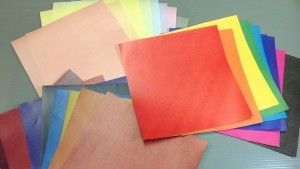
What are Pigments?
Pigments are generally coloured, organic or inorganic solid powder, and usually are insoluble. They are not affected physically or chemically in the substrate in which they are incorporated. Pigments can give a full range of colours. Pigments have a variety of applications that includes plastics, ink, and coating application. They are obtained in a powder form and are mixed with a liquid to be used as a solution for several applications.Pigments have become an indispensable item in almost all the industries today. There is no industry which does not have some role or the other for pigments in today’s times. Pigments impart color to solids and liquids and help to enhance their look many times over.
Pigments are broadly classified into the following categories:
- Earth color pigments: These are inorganic in nature and are obtained from natural sources. Some of the examples here are Umbers, Ochers and Siennas.
- Mineral pigments: Here naturally occurring elements are combined and heated to form the mineral pigments. Pigment green in chrome oxide shade, pigment blue in the ultramarine shade, pigment iron oxide yellow etc are some of the examples in this category.
- Plant Color pigments: The source of these pigments as the name suggests are plants. Some examples in this category are Saffron, Reseda, Alizarin Red etc.
- Synthetic pigments: These have maximum applications in industry and the reason for the same is the dazzling visual effect obtained on their use. Examples here are Dioxazine, Azo and Phthalocyanine pigments.
Pigments in the Paper & Pulp Industry
One of the major industries where pigments occupy a place of importance is the paper and pulp industry. Some of the commonly used groups of pigments in this industry are the Standard pigment dispersion line, Fluorescent pigment dispersion line and the Specialty pigment coatings line. An extensive range of shades are available in the Standard category and these are generally used in operations involving better dyeing.In the Fluorescent category,the colors are brilliantly fluorescent and can be inter-mixed to churn out highly interesting shades. Applications not requiring too much of lightfastness find this type of pigment class very useful. The Specialty pigment coatings include a specific class of non-metallic pigments which go very well with several latex binder systems. Gold and silver pigments come in this category. This type of pigments are however, not suitable for operations involving beater dyeing.
Pigments are used in the coloration of paper. If the brightness of the paper has to be decreased then the percentage of red and yellow part of the visible spectrum has to be decreased. In such cases, pigments which absorb these parts can be added. Their addition will reduce the paper’s brightness as desired quite contrary to the result attained with an optical-brightening agent. On the other hand if the paper whiteness has to be increased then pigments are used along with an optical brightening agent. At such times, violet and blue dyes are the most commonly used pigments.
Applications of Pigments in Paper & Pulp industry
Pigments find wide applications within the paper industry. These are:
- Printing paper
- Writing paper
- Tissues papers for various uses such as facial tissues, paper napkins and more
- Decorative papers
- Envelopes
- Corrugated boxes
- Labels, tags, posters
- Visiting cards and all types of invitation cards
Inspite of the digital era, the need for pigments for paper continue to increase year by year.